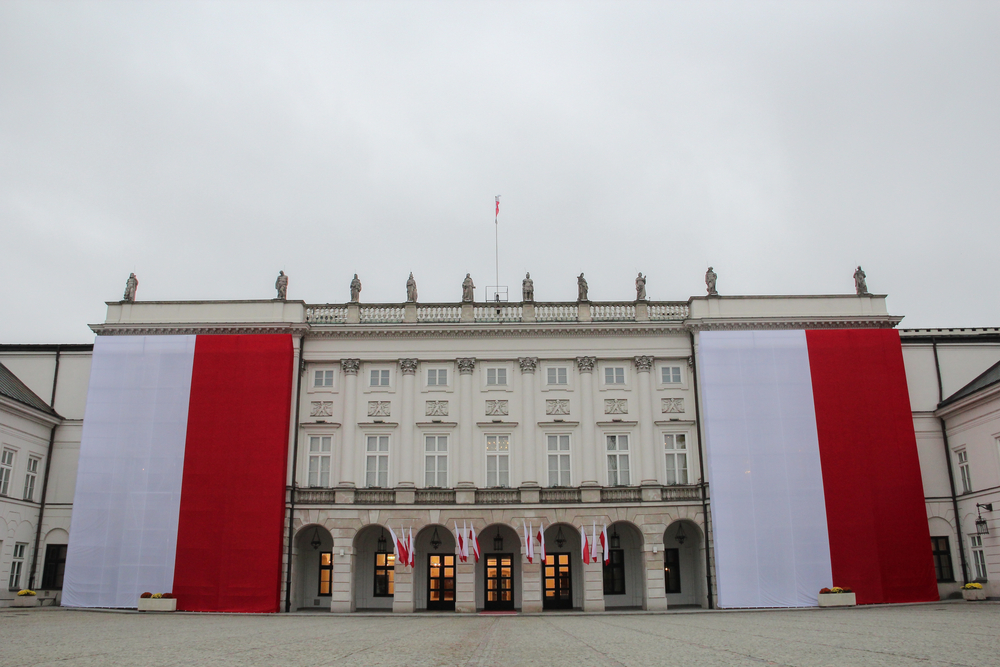Poland’s Central Bank Cuts Rates And Raises Implicit QE
After the extraordinary rate cut in March, Poland's central bank did their own version of 'whatever it takes' by cutting rates further by 50bp. They are also using unconventional measures via higher implicit QE, up to 8.4% of GDP.

Another rate cut and more QE
Poland's central bank decided to cut rates by 50 basis points with the main rate at 0.5%, depo at 0% and lombard at 1%.
We are forecasting a 4.5% year on year contraction in Polish growth, so expected only a 25bp rate cut in May or June, but the Council decided to frontload easing and pre-emptively deliver stimulus.
In March, the central bank delivered conventional easing with the 50bp base rate cut, slashing of the mandatory reserve which released PLN40bn of liquidity and unconventional measures including launching de facto quantitative easing and TLTROs.
Today, the central bank not only cut rates by another 50bp but also implied that Polish QE will be ramped up. Previously, the central bank was only purchasing Polish government bonds, but today the list of eligible instruments was extended to other bonds with state guarantees. That should support the new anti-crisis program call financial shield.
The Polish Development Fund should issue bonds funding the new program and those bonds should be bought by NBP.
There is no explicit limit to Polish QE, as the central bank calls this an open market operation stabilizing the yield curve and monetary transition. But in reality, this is quantitative easing.
We estimate that NBP should buy up to PLN185bn bonds, including PLN 85bn of POLGBs (3.9%GDP) and new bonds with state guarantees (up to PLN100bn, ie 4.6% of GDP). The purchases of bonds with state guarantees depends on the new financial shield taken by companies, which is highly uncertain. In the extreme case, Polish implicit QE should reach 8.4% of GDP. This is quite high, as the Federal Reserve's first QE measures reached around 9% of GDP.
PLN is unlikely to outperform CEE FX as Polish monetary easing is more aggressive and mildly negative for the currency.
The new anti-crisis program - loans convertible to subsidies worth of PLN100bn
Apart from the easing by the central bank today, the government has announced a financial shield - a large program of preferential loans to enterprises for a maximum of a three-year period. The program is worth PLN100bn, of which PLN25bn will be dedicated to microenterprises (zero-nine employees), PLN50bn to small and medium-sized companies (10-250 employees) and another PLN25bn to large enterprises. In the case of big companies, the state will be able to buy shares of the companies in trouble on market terms.
The loans will be disbursed via commercial banks with a simplified application path. However, only companies with decreasing turnover by more than 25% during the COVID-19 period will be eligible. The loans will be subject to large forgiveness (up to 75%) provided that its beneficent companies maintain employment and operation for at least a year.
The funding for this loan program will be provided mainly by debt issued by PFR Group (Polish Development Fund) and purchased by NBP. In such a way it is possible to circumvent the constitutional limit for public debt (60% of GDP). However, the additional debt will be included in the EU definition of public debt. It will also raise the general government deficit for 2020 above 10% of GDP (how much exactly depends on Eurostat interpretation).
The popularity of the new program should determine the size of borrowing needs and central bank purchases. The government assumes it should reach up to PLN100bn, but the conditions attached are quite demanding, sustaining employment (we don’t know how long).
In the previous anti-crisis program the companies' demand for the instrument, with this conditionality was lower than for other tools, so the actual take-up of the program may be much lower than PLN100bn and effectively NBP asset purchases too.
Disclaimer: This publication has been prepared by ING solely for information purposes irrespective of a particular user's means, financial situation or investment objectives. The information ...
more


